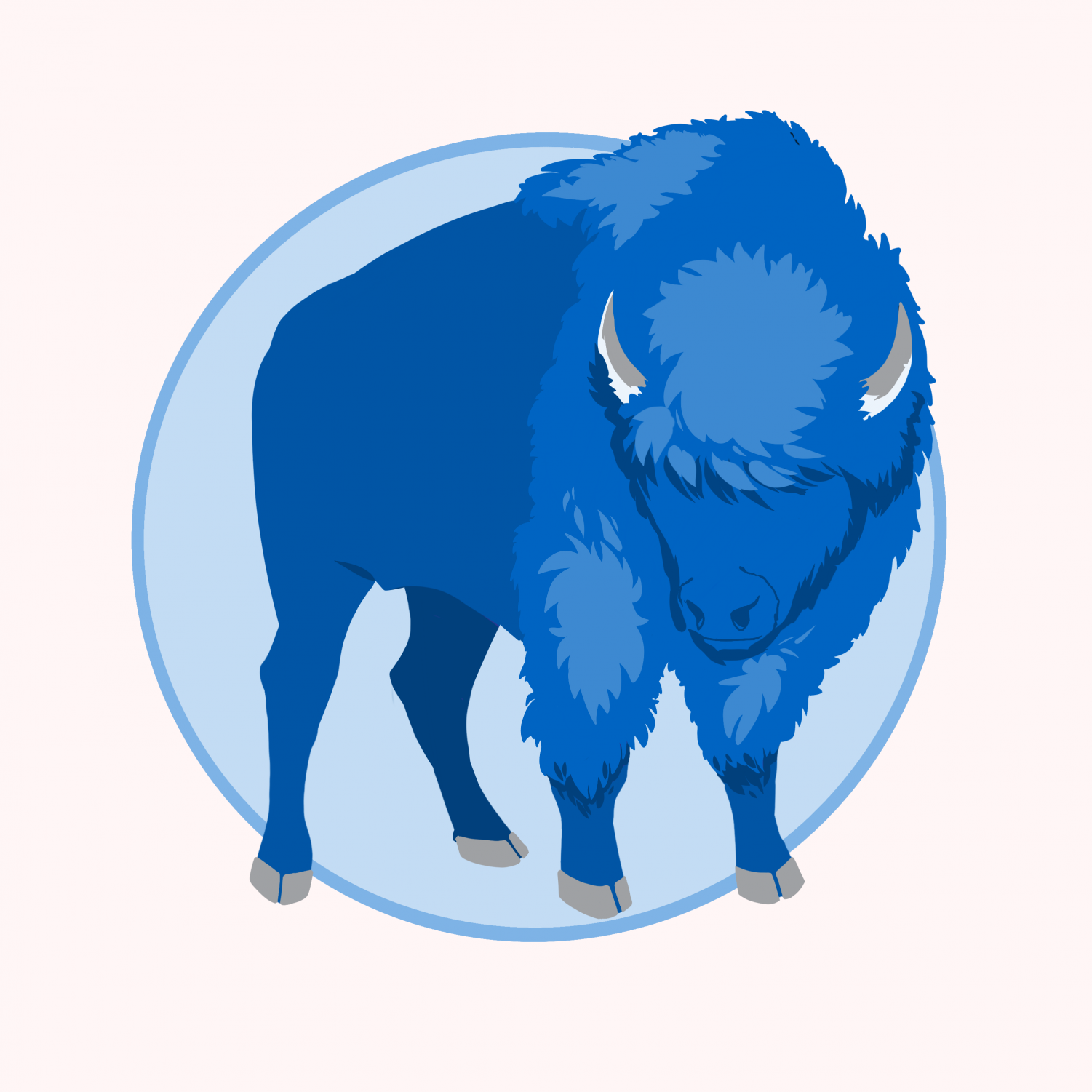Modern Art: A Brief Overview
Introduction | Art and AI
Art has witnessed a number of historical movements and fluctuations. In the last century alone, we have seen the use of clever juxtaposition in surrealism, the vibrant application of color in pop art, and the fluidity of digital art – the dominant form of art today. This article will focus primarily on contemporary pieces and a snippet of the future of art.
We are in an age where by typing a couple words in a program, you can produce astonishing works of art. Using DALL-E OpenAI, which has been a major talking point in both the art and tech communities, the very definition of art is changing. Ranging from incredible made-up cityscapes to an avocado riding a scooter done in the style of Van Gogh, we have the ability to generate professional visual works in seconds that would’ve taken years to make by hand. Using easily accessible websites such as craiyon.com and thispersondoesnotexist.com, photography and art may soon no longer be primarily hand-made. Is this a change for the better or worse? I’ll let you decide.
Free applications using this technology are still in their formative years. The picture below is what you’d get if you try to generate art of a “buff leprechaun” on craiyon.com.
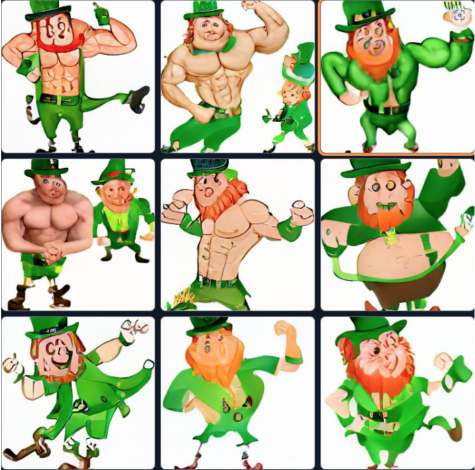
A Dive Towards Art in the Digital World
Digital art has been a thing for decades – classes are widely taught and programs such as Procreate and Photoshop have been developed. It’s a very accessible medium too, as all you really need is a screen. In essence, it’s a tool that helps simplify the art-making process for artists. Features such as the undo tool make digital art much more forgiving than if you were to use traditional mediums. As a matter of fact, we’ve been using a program called Ibis Paint X to assist with a project in my Drawing & Painting class. Additionally, digital art isn’t only limited to paintings and drawings, films and animation have also garnered the attention of many artists today. Without digital art, companies such as Pixar and Disney wouldn’t be nearly as successful as they are today.
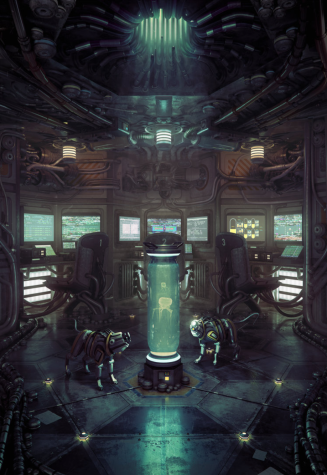
Until the Light Takes Us, Cornelius Dämmrich
With all that being said, digital art certainly has gotten some criticism. With the digital nature of the artform, it’s difficult to see pieces in-person. This, to some, is one of the biggest flaws of digital art. The Louvre is only the Louvre because you’re able to look at magnificent works of art done by masters of the past in-person. Their intricate brushstrokes and unique use of art principles may not be easily captured on a digital canvas. Also, some say digital art is not “real” art because of its simplistic nature, causing a feud between traditional and digital artists.
Art has undergone a complete transformation with the advent of the web. Since the 1960s, digital art has been thoroughly developed and tested to create the careers and degrees that we can take advantage of today. We can see this change with Britain’s most wealthy contemporary artist, Damien Hirst (who I strongly recommend you check out). Curiously, he burns his paintings and sells them as non-fungible tokens (NFTs), unique digital artworks that cannot be copied. These pieces are sold today for millions of dollars. Whether you like it or not, digital art is certainly here to stay.
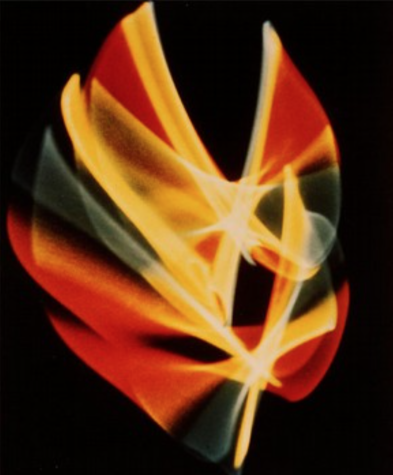
Oscillation 520, Ben Laposky
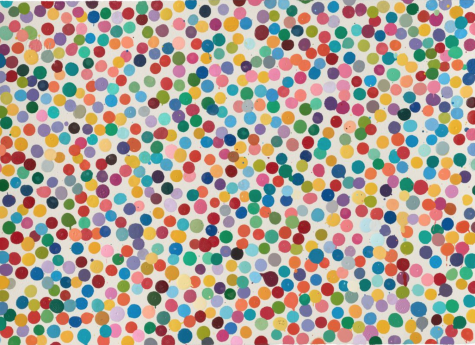 One of Damien Hirst’s signature Spot Paintings
One of Damien Hirst’s signature Spot Paintings
Modern Art Using Traditional Mediums
While digital art is increasing in popularity, we can’t forget about traditional fine arts. However, as the modern art movement dominates the traditional world, controversy has risen on whether the quality of art is degenerating. In recent years, the abstract expressionism movement has been prominent among the art world, and it’s quite interesting to say the least. Well-known examples of this include Jackson Pollock’s drip paintings, a collection of pieces done by splattering a bunch of paint on canvases dramatically and spontaneously. Minimalism is another recent movement that focuses on simple, undetailed works. Although these movements may sound interesting, they have been heavily criticized.
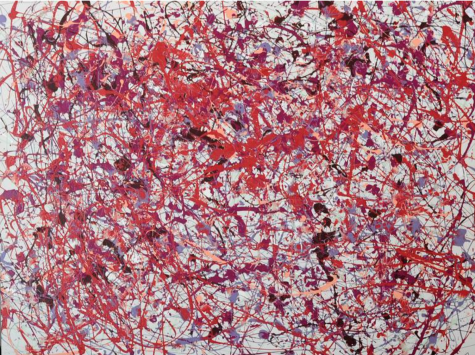
Sanguine Pool, Jackson Pollock
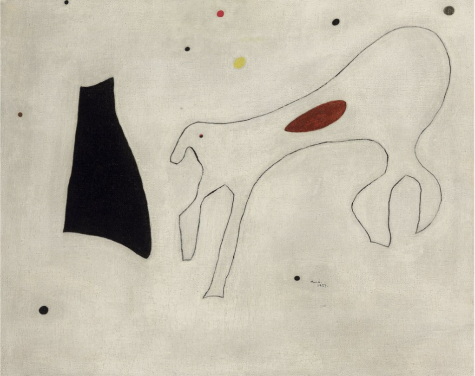
Peinture (Le Chien), Joan Miro
Are we diverging from mastery? Has art become dull and childish? – critics ask these questions today. However, even with the visually unimpressive pieces above, many seem to appreciate these works. Personally, I find the works of past centuries much more enticing to look at, but that’s subjective.
The Final Analysis
Is art dead? The answer to that is maybe. The very definition of art is subjective and although art careers have been declining, the concept is still very much alive. However, given the direction that it’s heading, it won’t be surprising if artists become a thing of the past. I’m not sure how I feel about this just yet. The cliché “AI will destroy us all!” phrase doesn’t seem right in this context, but I also do not think the decline of art will stop anytime soon3 very broad . As AI art enters the ears of more individuals, it will become more difficult for an already shrinking field to grow. Recent trends in art make it less of a possibility, and as more artists release works that look like they were done by children, the reputation and face of art may become negative. I think art is a very underrated subject, and maybe one day, it’ll regain the appreciation it very much deserves and had.

The Raft of the Medusa, Théodore Géricault
Rui Zheng is a junior at Shaker and is a Co-Editor-in-Chief and Photo & Video Team Lead for the Shaker Bison Newspaper, which he has been a part of...

